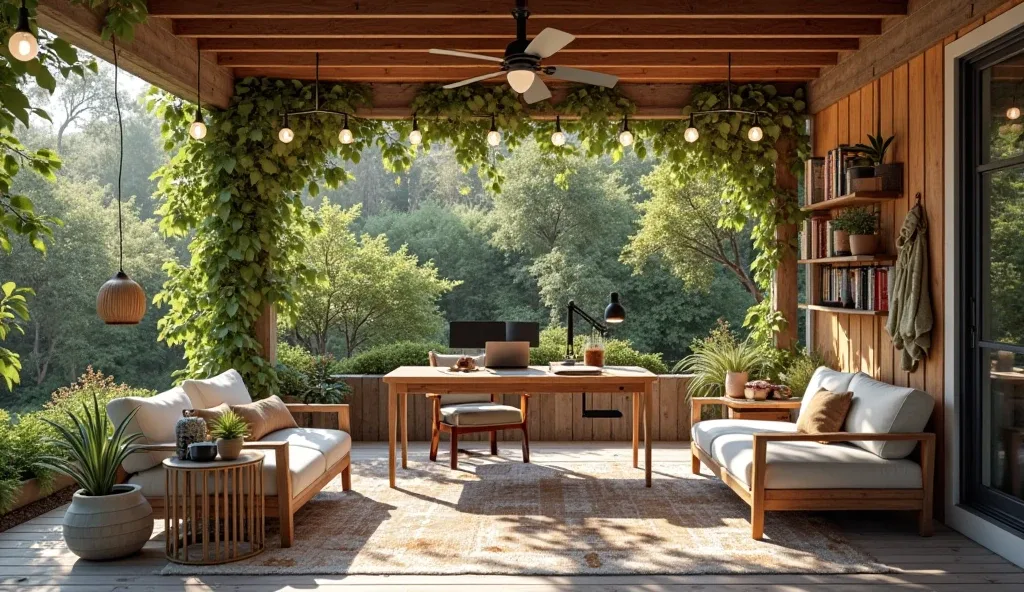Most home offices are basically dining room tables with laptops on them. Maybe you’ve upgraded to a corner desk from a big box store, but let’s be real—it probably still feels more like a temporary setup than an actual workspace where you can focus and be productive.
Here’s what I’ve learned from years of remote work: your environment directly affects your motivation, creativity, and ability to separate work from everything else happening in your home. When your “office” is just wherever you can find space, your brain never fully shifts into work mode—and it never fully shifts out of it either.
The most productive home workers understand that a dedicated workspace isn’t a luxury; it’s essential for both professional success and personal sanity. Whether you’re dealing with a spare bedroom, a forgotten corner, or literally just a closet, the right setup can transform any space into a productivity powerhouse.
Ready to create a home office that actually supports your best work instead of fighting against it? These ideas will help you design a space where you genuinely want to spend your working hours.
Build Your Productivity Foundation
Before we get into specific setups, let’s establish what makes a home office actually functional for sustained productivity and focus.
Ergonomic Essentials First – Your body will tell you immediately if your workspace isn’t working. Invest in proper seating, monitor height, and keyboard placement that support good posture during long work sessions. Productivity drops dramatically when you’re physically uncomfortable.
Natural Light Optimization – Position your workspace to take advantage of natural light without creating screen glare. The right lighting affects everything from eye strain to mood and energy levels throughout your workday.
Noise and Distraction Control – Your office needs to feel separate from household distractions, even if it’s physically part of another room. Consider how sound travels and what visual barriers might help you focus.
Think Beyond Traditional Office Furniture
The most creative home office solutions work with your actual living space rather than trying to force standard office furniture into residential rooms.
Multi-Functional Integration – Look for opportunities where your office can serve double duty without compromising either function. The best solutions enhance your home’s overall functionality rather than just adding clutter.
Storage Strategy – Home offices accumulate papers, supplies, and equipment quickly. Plan storage that keeps essential items accessible while maintaining a clean, organized appearance that supports focus.
Technology Infrastructure – Consider your internet connectivity, power needs, and cable management before finalizing your layout. Nothing kills productivity like tech problems in your own workspace.
Create Boundaries That Support Focus
This is where home offices succeed or fail—establishing clear physical and mental boundaries between work and personal space.
Visual Separation – Even in shared spaces, create visual cues that define your work area. This helps both you and other household members recognize when you’re in work mode.
Transition Rituals – Design your space to support starting and ending work rituals. Physical actions like opening a desk or adjusting lighting help your brain shift between work and personal time.
Professional Appearance – If you take video calls, consider how your background looks on camera. A professional appearance boosts your confidence and credibility during important meetings.
14 Home Office Ideas
Idea 1: Built-in Wall Desk System
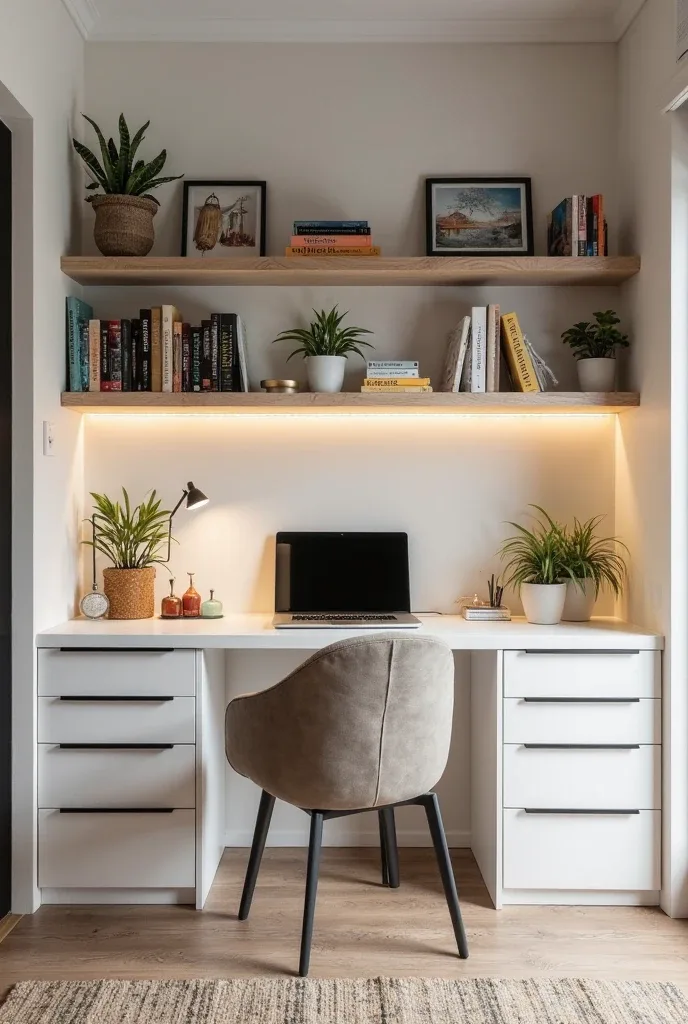
Transform an entire wall into a comprehensive workspace with custom built-in desks and matching upper storage. This approach maximizes every inch while creating a clean, intentional look that feels more like high-end furniture than office equipment.
The beauty of built-ins is how they can incorporate all your needs—hidden cable management, integrated lighting, and storage that actually fits your specific supplies. Upper cabinets keep clutter hidden while open shelving displays books and plants that make the space feel alive.
This works particularly well in spare bedrooms or dedicated office rooms where you want maximum functionality with a custom, finished appearance. The investment creates a workspace that truly supports serious productivity.
Idea 2: Corner L-Shaped Efficiency

Maximize available space with an L-shaped desk setup that turns any corner into a productive command center. This configuration provides ample surface area for multiple monitors, paperwork, and supplies while fitting efficiently into most room layouts.
The corner placement naturally creates a defined workspace while leaving the rest of the room available for other functions. Position your setup to take advantage of natural light from two directions if possible.
This approach works brilliantly in bedrooms, living rooms, or any shared space where you need serious functionality without overwhelming the room. The efficient footprint leaves space for other furniture and activities.
Idea 3: Adjustable Standing Desk Revolution
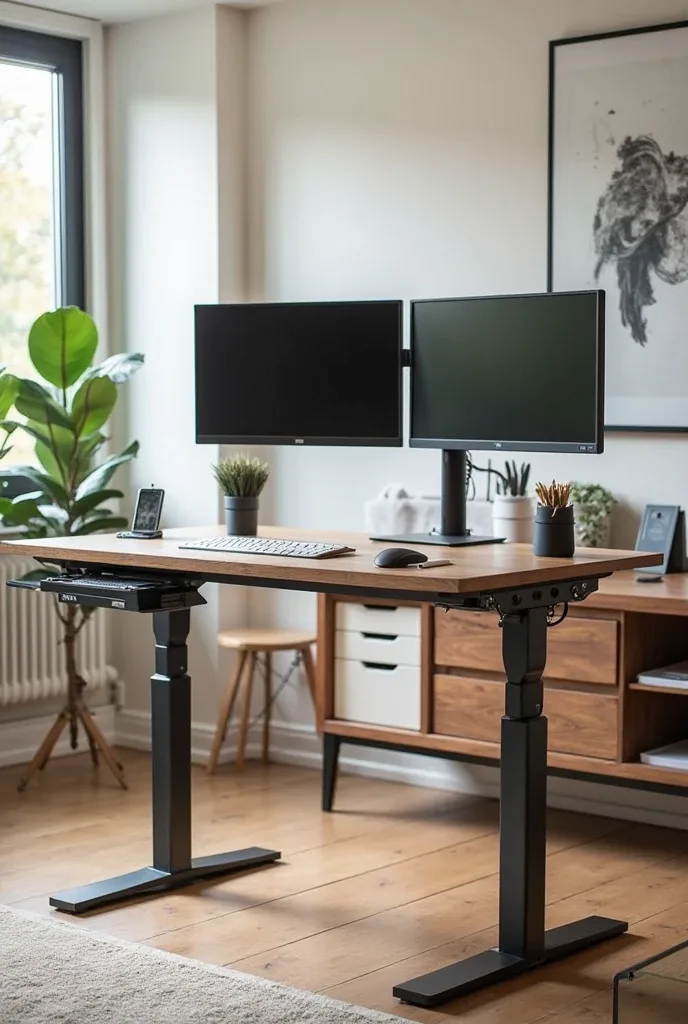
Create a healthier workspace with standing desk converters that let you alternate between sitting and standing throughout your workday. This flexibility improves circulation, reduces back strain, and can actually boost energy and focus.
The key is finding a converter that adjusts smoothly and holds your monitor at proper eye level in both positions. Anti-fatigue mats make standing more comfortable while desktop organizers keep supplies accessible.
This solution works with virtually any existing desk setup, making it perfect for renters or anyone wanting to test standing desk benefits before committing to permanent furniture changes.
Idea 4: Space-Saving Murphy Desk Magic

Maximize small spaces with a fold-down Murphy desk that completely disappears when not in use. This ingenious solution provides a full workspace when needed while maintaining clean, uncluttered room appearance during off hours.
The best Murphy desk units include storage for supplies and papers, so everything you need stays organized and hidden. When folded up, the unit can look like decorative wall furniture rather than obvious office equipment.
This works particularly well in studio apartments, guest rooms, or any multi-purpose space where you need occasional workspace without permanent office furniture dominating the room.
Idea 5: Minimalist Floating Desk Shelf
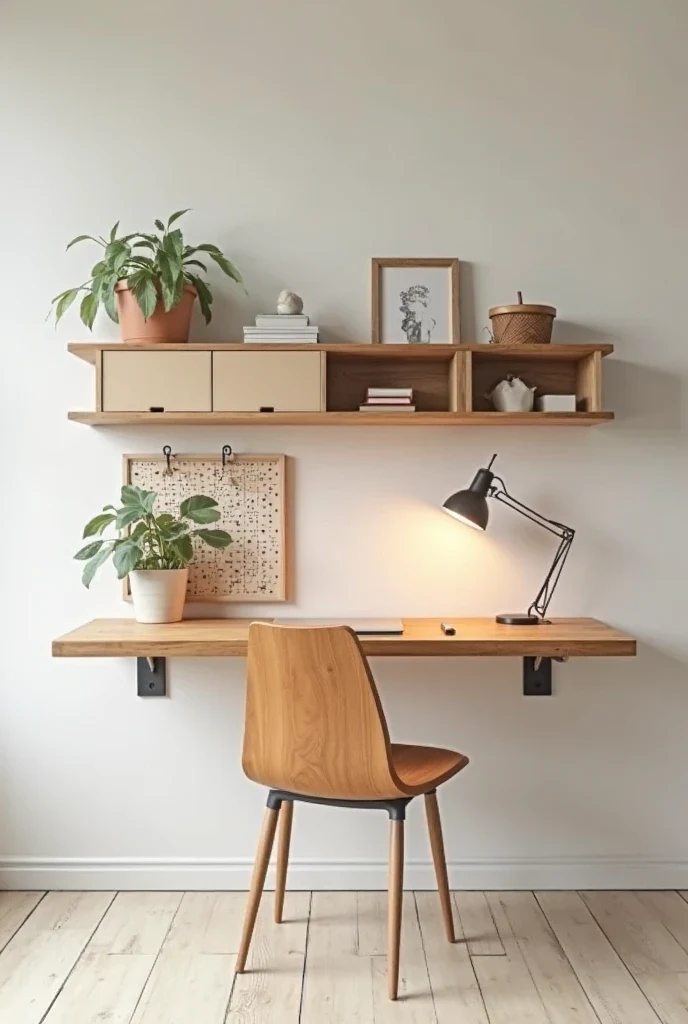
Achieve maximum impact with minimal footprint using a floating wooden desk shelf that provides essential workspace without overwhelming small areas. This clean approach works beautifully in modern or minimalist interiors.
Wall-mounted storage solutions keep supplies organized without requiring floor space. Choose a depth that accommodates your laptop and essential items while allowing your chair to tuck completely underneath when not in use.
This solution is perfect for small apartments, bedrooms, or any space where you need functional workspace that doesn’t dominate the room visually or physically.
Idea 6: Closet Office Conversion
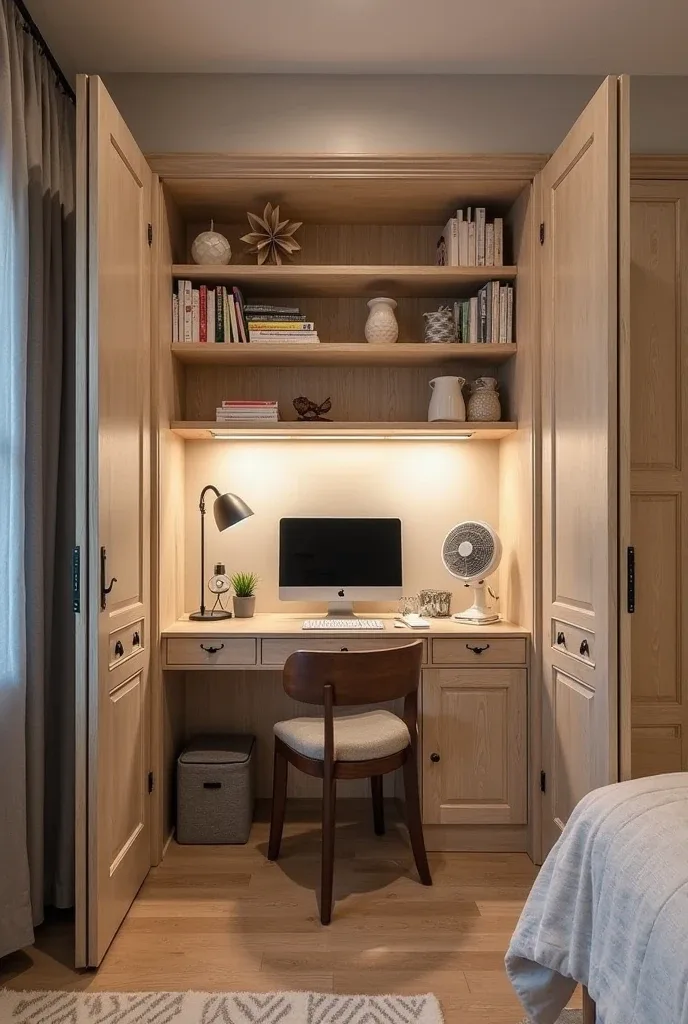
Transform a bedroom closet into a dedicated private office that can be completely hidden when not in use. Remove existing closet systems and install a custom desk that fits the space perfectly.
The enclosed nature creates excellent focus while bi-fold or sliding doors let you close off work completely during personal time. Add proper lighting and ventilation to make the space comfortable for extended use.
This approach works particularly well for people who need true separation between work and personal space but don’t have dedicated room for an office.
Idea 7: Kitchen Counter Integration
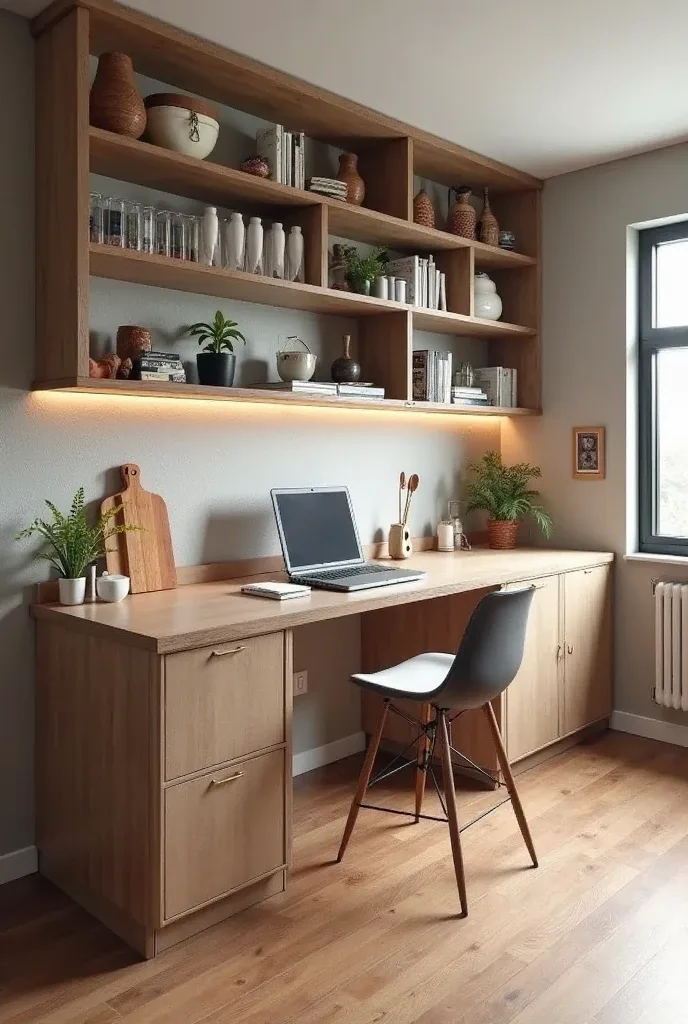
Incorporate workspace into your kitchen counter design for a central location that works with busy household rhythms. This setup allows you to supervise family activities while handling work tasks.
Bar stool seating makes the workspace comfortable for both quick tasks and longer work sessions. Built-in storage keeps office supplies organized alongside kitchen items without creating visual clutter.
This solution works best for people whose work involves frequent communication or coordination with family members, or those who prefer being in the heart of household activity.
Idea 8: Under-Stairs Office Innovation

Turn awkward under-stair space into a cozy, productive office nook with custom-angled furniture that maximizes every inch. This transforms otherwise wasted space into valuable workspace.
Built-in storage solutions work with the staircase angle while pendant lighting creates focused task illumination. The enclosed feeling can actually enhance focus and concentration.
This approach works particularly well in homes where space is premium but you need a dedicated workspace that doesn’t interfere with main living areas.
Idea 9: Bedroom Corner Workspace
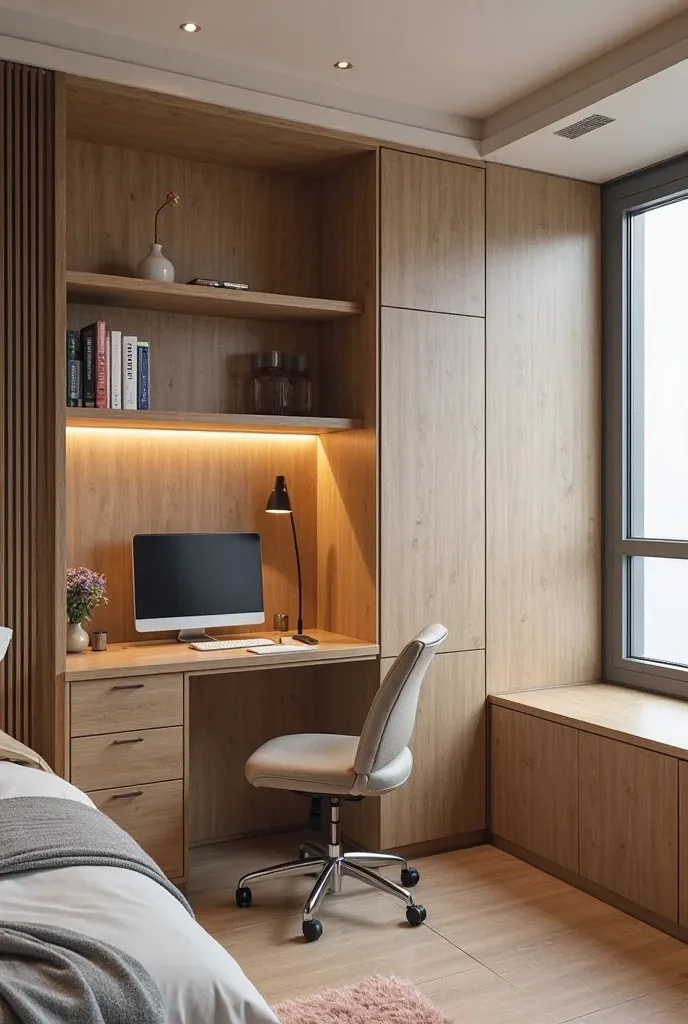
Create a dedicated work zone within your bedroom using a compact desk setup and room divider screen that provides visual separation without permanent walls.
Choose furniture that complements your bedroom decor so the office elements feel intentional rather than intrusive. The key is maintaining bedroom tranquility while providing functional workspace when needed.
This solution works for people who need convenient access to workspace but want to maintain bedroom calm during non-work hours.
Also Read: 14 Aesthetic Window Ideas That’ll Change The Way How Light Enters Your Home
Idea 10: Dining Room Dual Purpose
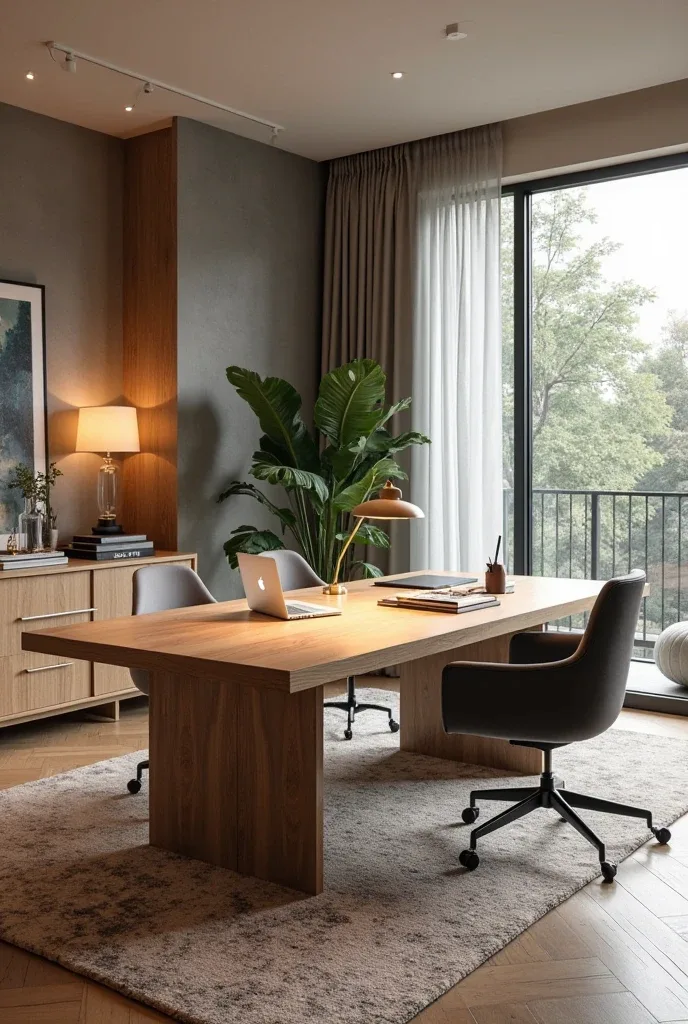
Share dining room space with expandable furniture that serves both office and dining functions seamlessly. Use storage pieces like sideboards to hide office supplies while maintaining dining room aesthetics.
The key is choosing pieces that work for both purposes without compromising either function. Tables that extend for dining but work comfortably for computer work provide the best of both worlds.
This approach works well in homes where the dining room sits unused during the day but remains important for entertaining and family meals.
Idea 11: Garage Workshop Office
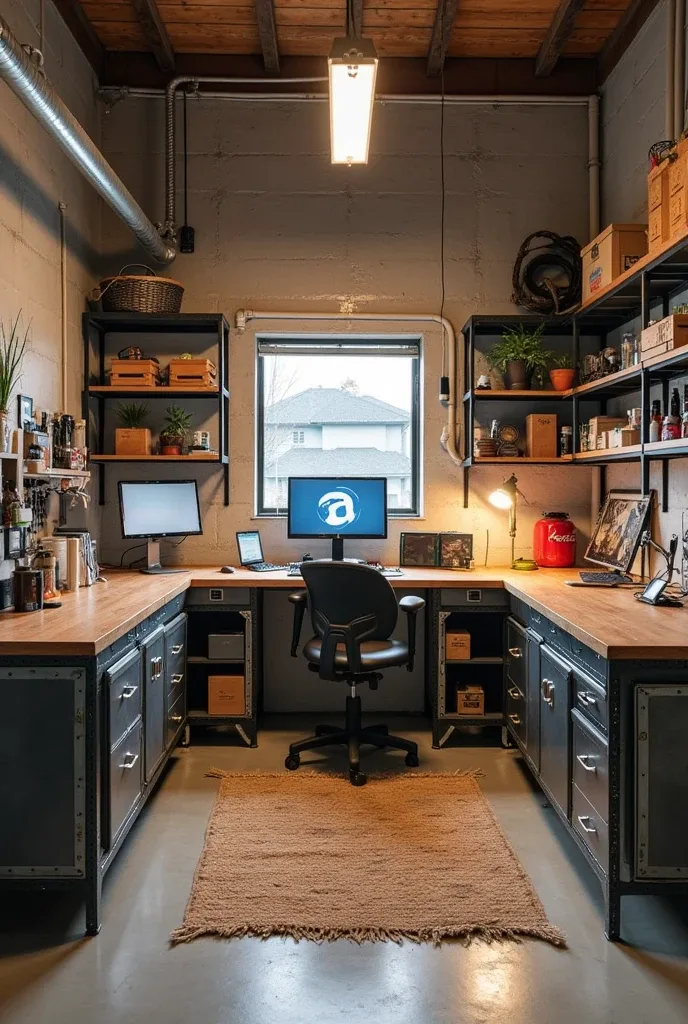
Convert garage space into a productive office environment with industrial-style furniture that embraces the workshop aesthetic while providing serious functionality.
Concrete floors, metal storage, and utilitarian lighting create a focused atmosphere that’s completely separate from main living areas. The workshop aesthetic can actually enhance creativity and problem-solving mindset.
This solution works particularly well for people in creative or technical fields who benefit from the workshop environment and need space for projects beyond typical office work.
Idea 12: Living Room Secretary Desk
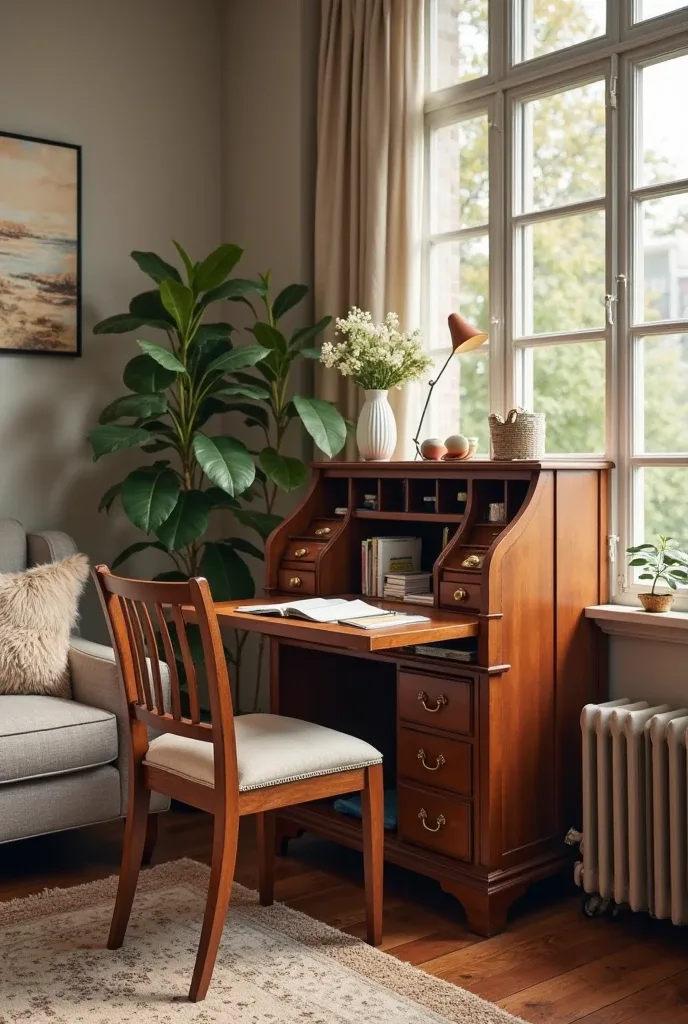
Integrate workspace into your living room using a vintage secretary desk that provides hidden storage and workspace while contributing to the room’s decorative scheme.
When closed, the desk looks like beautiful furniture rather than office equipment. When opened, it provides organized workspace with built-in storage for supplies and papers.
This approach works in traditional or eclectic interiors where you need occasional workspace that enhances rather than detracts from living room aesthetics.
Idea 13: Outdoor Patio Office
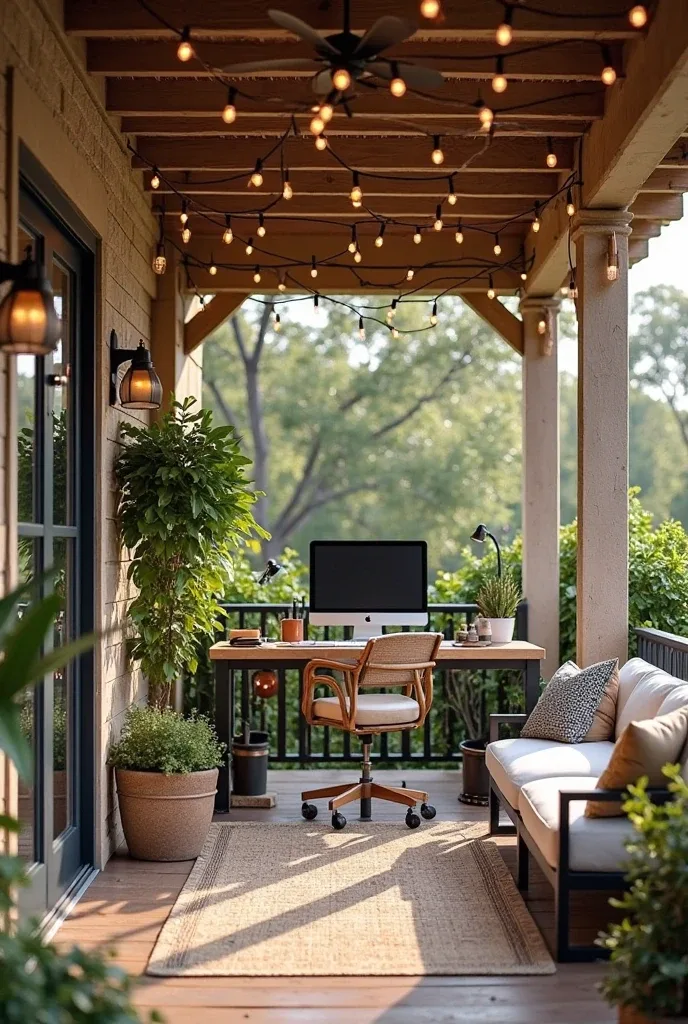
Create an inspiring outdoor workspace on a covered patio with weather-resistant furniture and proper technology protection. The natural environment can boost creativity and reduce stress.
String lights and plants create an inviting atmosphere while weather-resistant storage protects supplies. Wi-fi extenders ensure reliable connectivity for professional work requirements.
This works best in temperate climates with covered outdoor space and for work that doesn’t require extensive paperwork or equipment.
Idea 14: Attic Loft Transformation
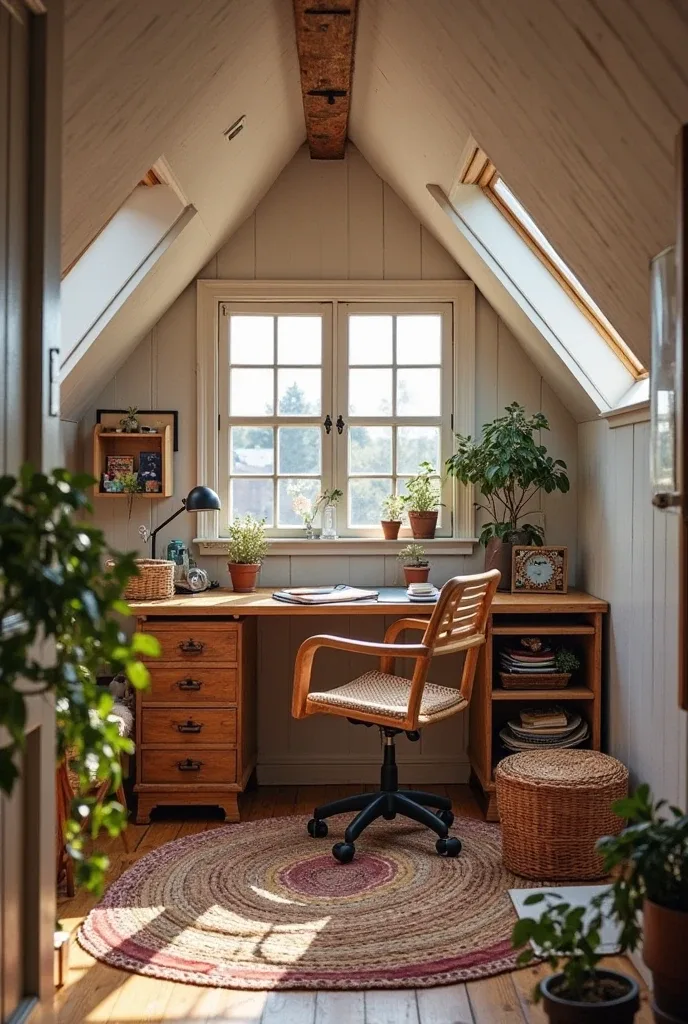
Convert attic space into a private office retreat with custom solutions for slanted ceilings and unique architectural challenges. Dormer windows and skylights provide natural light and inspiring views.
Custom-built storage and desk solutions work with the attic’s angles while maximizing usable space. The separated location provides excellent focus and privacy for demanding work.
This approach works well for people who need quiet, private workspace and have attic space that can be properly insulated and climate controlled.
Making Your Home Office Actually Work
The most successful home office setups consider your specific work style, household dynamics, and daily routines. Don’t choose a setup just because it looks good—make sure it supports how you actually work most effectively.
Test your setup before making permanent changes. Spend a full week working in your proposed configuration to identify any ergonomic issues, distractions, or workflow problems before investing in expensive furniture or renovations.
Remember that your home office should enhance both your work productivity and your home life. The best solutions make both better rather than creating conflict between professional and personal needs.
Your workspace should evolve with your needs and career changes. Choose flexible solutions that can adapt rather than permanent installations that might become obsolete as your work changes.

